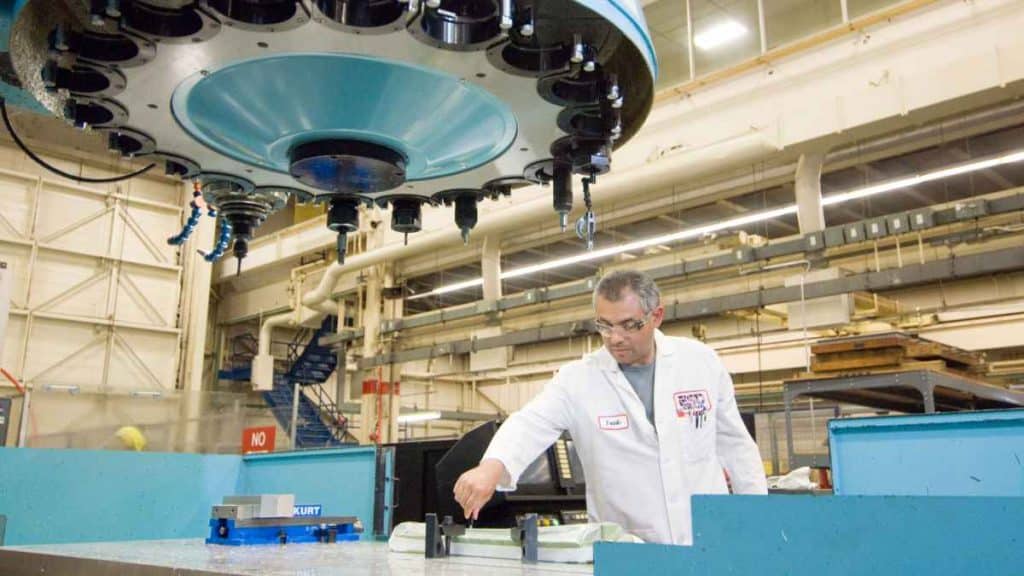When it comes to designing and manufacturing telescope mirrors, aerospace engineers need to use the highest-quality materials and processes available to them.
It doesn’t matter how good an engineer is, without advanced equipment design, they will never be able to produce the type of mirrors that appropriate to lift off into space.
Thanks to the rising popularity, and widespread use, of thin films, highly advanced telescopic mirrors have been created that solve many of the issues aerospace companies had previously faced.
Keep on reading to find out more about how thin film despoition has played a crucial part in the production of telescope mirrors.
Thin Film Deposition Explained
Thin films are extremely fine coatings that are put on substrate materials such as silicon wafer, electronic parts, or optical lenses through a deposition process.
There are two different types of deposition processes that can be used to create thin films: physical vapor deposition and chemical vapour deposition.
Under these types of deposition, there are many different processes that can be used, depending on the material and purpose of the end product.
Different applications will often require very different types of thin films that can include any of the following:
i. AR/HR (antireflective or high-reflectivity) coatings.
These are coating that can transform the optical properties of a material. For example, they can filter visible light or deflect an incoming light beam, which makes them most commonly used for creating electronic displays, output mirrors, and low optical thickness lenses.
ii. DLC (diamond-like carbon) thin films.
These films can increase the durability of the material it’s laid upon by boosting it’s hardness and scratch-resisting properties. Because of their ability to improve the longevity of products, you’ll most commonly see these films used in microelectronics, sensors and medical devices.
iii. TCO (transparent conductive oxide) coatings.
These types of film have electrically conductive properties and provide a transparent finish. Because of its properties, they are frequently used to make touchscreens, LCDs and photovoltaics.
iv. Biocompatible hard coatings.
Ensuring the longevity and safety of implanted devices, biosensors and artificial limbs is extremely important, and these hard coatings can ensure just that.
Anti-reflective Coating of Telescope Mirrors
The primary mirror is a fundamental part of telescopic mirrors that collects light from the objects its observing. Because of the extremely harsh conditions in space, the materials used within these mirrors needs to be highly durable and not prone to damage.
In space, materials can come into contact with things like thermal fluxes, solar and cosmic radiation, high velocity impact and exposure to vacuum – this means that thermal stability and hardness are among the most important qualities that telescope mirror need to possess.
The reflectivity of a telescope mirror is also extremely important in order for the telescope to operate properly. Without high reflecitivyt, the telescope will be unable to help astronomoers see far-away objects in space more clearly as, ultimately, it’s the reflectivity that helps form a clear image.
Coating Development Process
The process of creating thin films for use in telescopic mirrors starts by pumping down the presssure of a vacuum that’s fit to recreate the kind of pressure experienced in space.
Then, once the ideal vacuum pressure has been reached, the deposition process will begin as it would to create any other type of thin film coating.
Using pure argon and oxygen to promote adhesion, the mirror will be spun continuously throughout the process to create a uniform coating across the entire mirror surface and complete oxidisation of the thin film layer.
The aluminimum layer is flash evaporated to prevent the metal from absorbing any leftover gases. Using an ion-assisted deposition process, a hard, dense coating that is laid upon the mirror.
This process is preferred for creating the kind of high-quality, reflective mirrors that are required for use in outer space.
Emerging Coating Technologies
In this article, we’ve taken you through everything you could need about the application of thin film technology in telescopes.
There are many different types of PVD coatings that are made in a variety of processes, each creating different types of thin films.
Although thin films are improving the aerospace industry, there is still a lot more improvements can be made and there are already researchers who are working on new and improved designs and techniques.
For example, researchers out of the University of California Santa Cruz have started to rework thin film technology that had previously been used in microelectronics tod evelop protective coatings for telescopes.
Focussing on large, silver-based telescope mirrors, the researchers hope to design telescopes that have superior reflective properties – compared to traditional telescopes that use aluminium for the reflective layer.
Silver is notorious for eroding quickly and being difficult to work with however, these researchers hope to make more efficient and cost effective mirrors using the metal.
